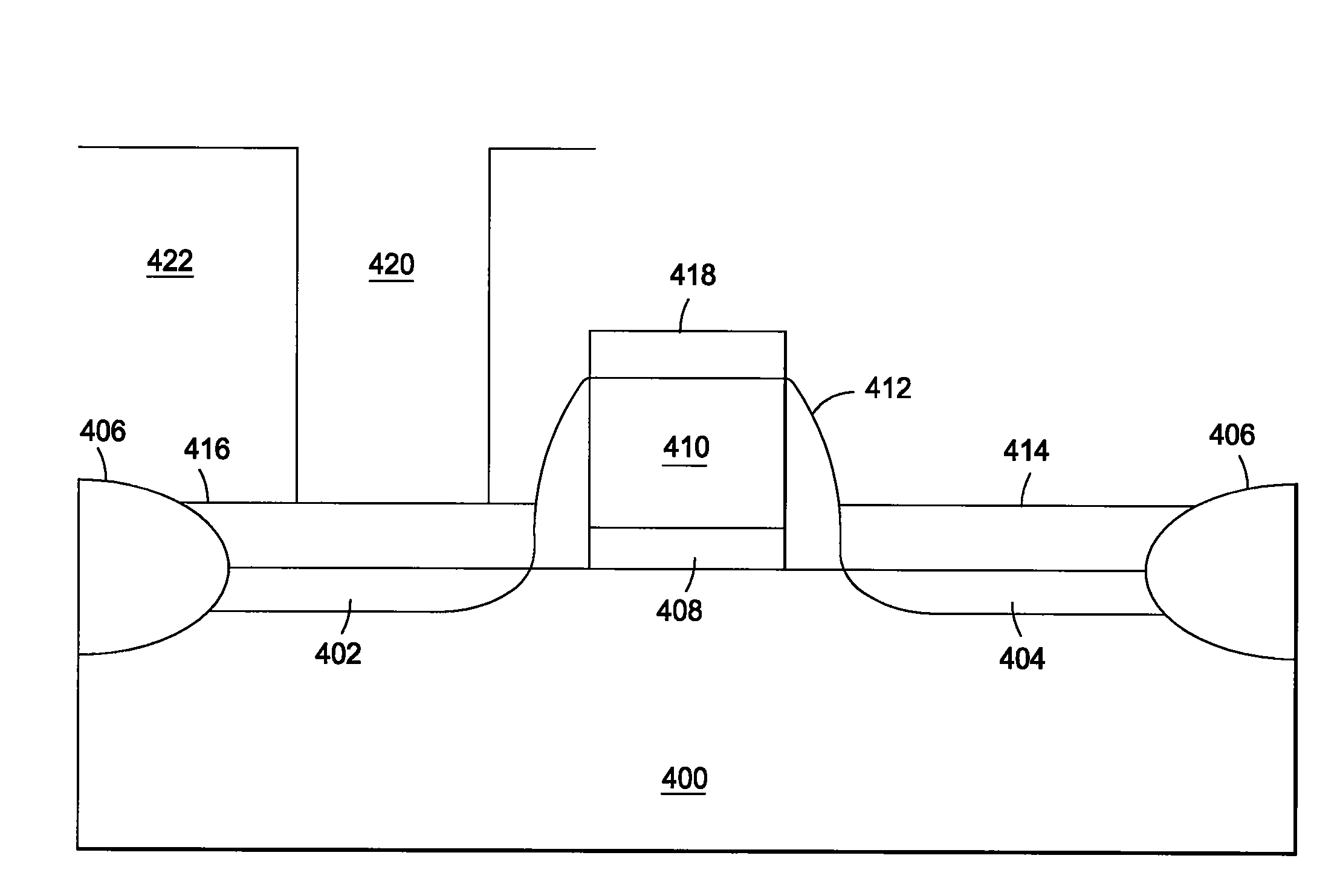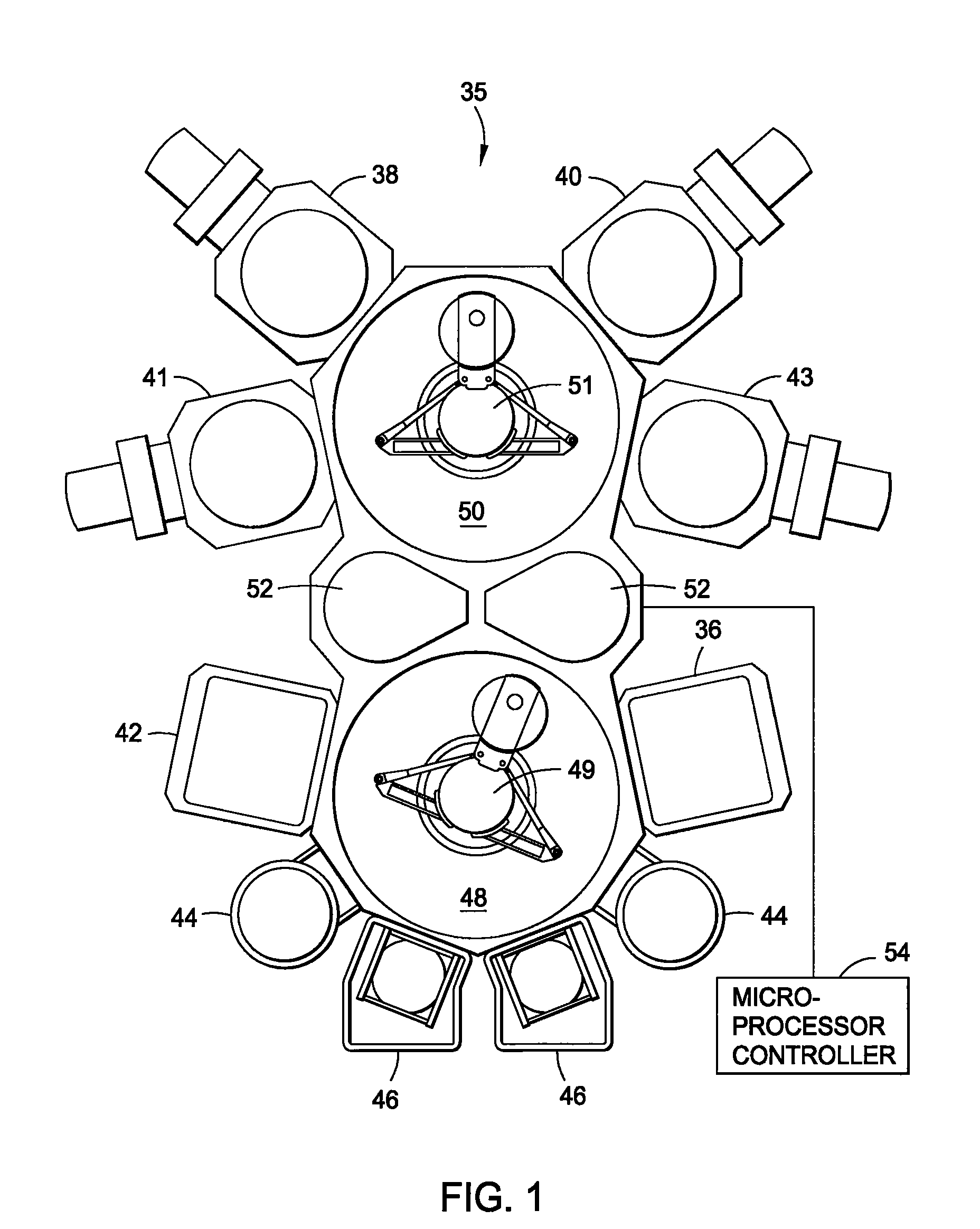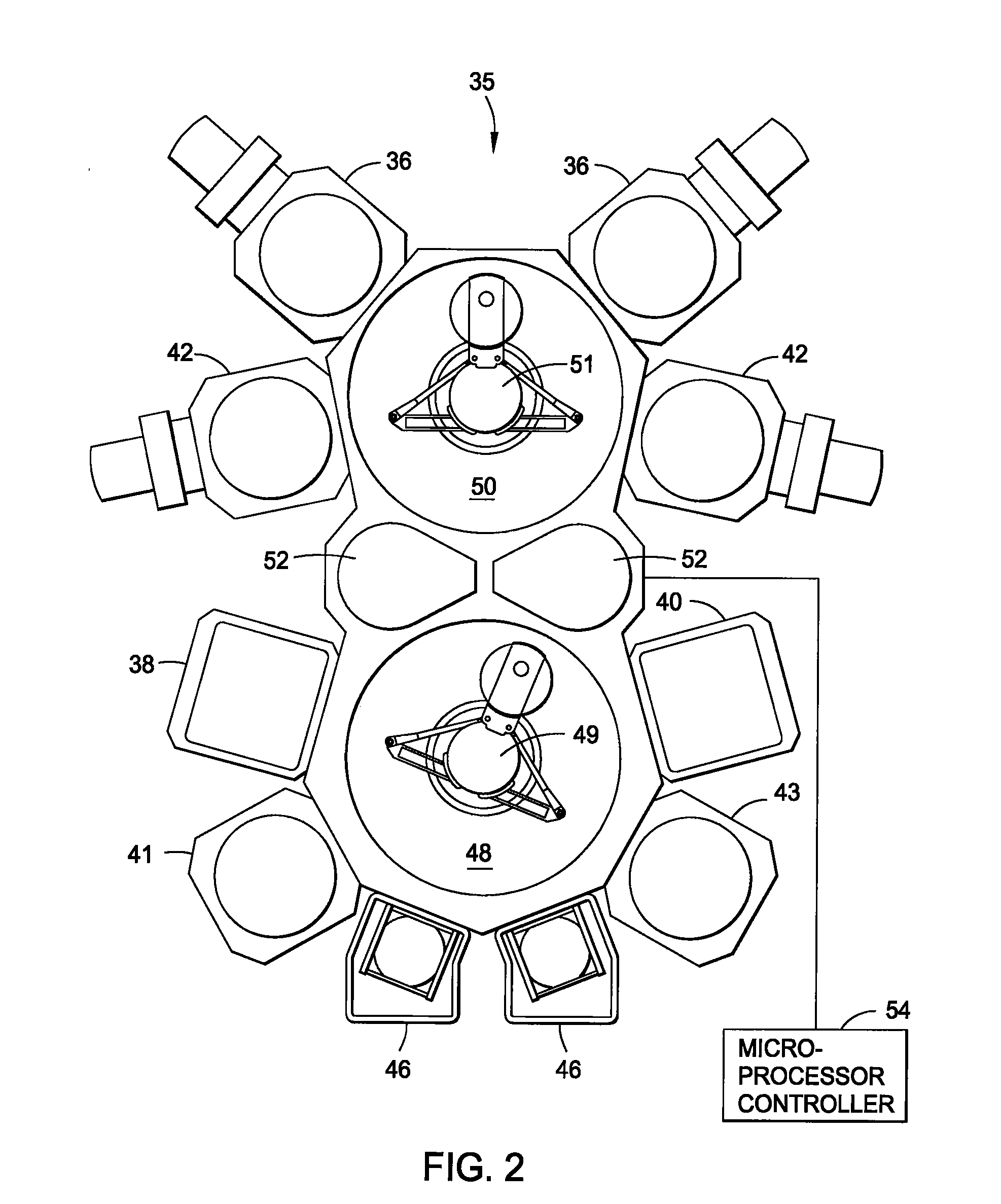Process for forming cobalt and cobalt silicide materials in copper contact applications
a technology of cobalt silicide and cobalt silicide, which is applied in the direction of coatings, chemical vapor deposition coatings, semiconductor devices, etc., can solve the problems of reducing the reliability of the overall circuit, difficult to integrate cobalt silicide processes into conventional manufacturing equipment, and cobalt agglomeration
- Summary
- Abstract
- Description
- Claims
- Application Information
AI Technical Summary
Benefits of technology
Problems solved by technology
Method used
Image
Examples
example 1
[0324]A substrate is treated with at least one preclean process to expose a silicon-containing surface, a cobalt silicide material is deposited over the silicon-containing surface, a metallic cobalt material is deposited over the cobalt silicide material, an optional treatment process may be used to remove cobalt oxides or other surface contaminants, a tungsten material is deposited over the metallic cobalt material, and the tungsten material is exposed to a CMP process. The metallic cobalt material and the cobalt silicide material may be deposited in a first processing chamber, and the optional treatment and the deposition of the tungsten material may be performed in a second processing chamber.
example 2
[0325]A substrate is treated with at least one preclean process to expose a silicon-containing surface, a cobalt silicide material is deposited over the silicon-containing surface, an optional treatment process may be used to remove cobalt oxides or other surface contaminants, a tungsten material (e.g., metallic tungsten) is deposited over the cobalt silicide material, and the tungsten material is exposed to a CMP process. The cobalt silicide material may be deposited in a first processing chamber and the optional treatment and the deposition of the tungsten material may be performed in a second processing chamber.
example 3
[0326]A substrate is treated with at least one preclean process to expose a silicon-containing surface, a cobalt silicide material is deposited over the silicon-containing surface, a metallic cobalt material is deposited over the cobalt silicide material, the substrate is exposed to an annealing process, an optional treatment process may be used to remove cobalt oxides or other surface contaminants, a tungsten material is deposited over the metallic cobalt material, and the tungsten material is exposed to a CMP process. The deposition of the metallic cobalt material and the cobalt silicide material and the annealing process may be performed in a first processing chamber, and the optional treatment and the deposition of the tungsten material may be performed in a second processing chamber.
PUM
| Property | Measurement | Unit |
|---|---|---|
| size | aaaaa | aaaaa |
| temperatures | aaaaa | aaaaa |
| temperature | aaaaa | aaaaa |
Abstract
Description
Claims
Application Information
 Login to View More
Login to View More - R&D
- Intellectual Property
- Life Sciences
- Materials
- Tech Scout
- Unparalleled Data Quality
- Higher Quality Content
- 60% Fewer Hallucinations
Browse by: Latest US Patents, China's latest patents, Technical Efficacy Thesaurus, Application Domain, Technology Topic, Popular Technical Reports.
© 2025 PatSnap. All rights reserved.Legal|Privacy policy|Modern Slavery Act Transparency Statement|Sitemap|About US| Contact US: help@patsnap.com



